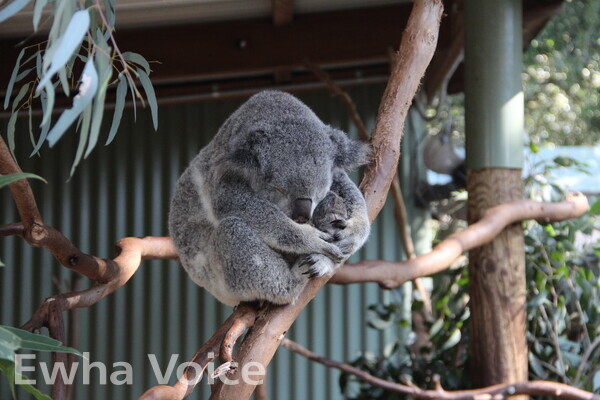
Earth’s outstanding biodiversity, well known to all, has been under massive pressure for the past few centuries. The rapidly expanding human population has put enormous pressure on wildlife, leaving almost 8,000 species of animals categorized as globally threatened and over 9,600 tree species in danger of extinction, according to the international wildlife conservation charity Fauna & Flora. Despite the majority of the population acknowledging the serious levels of wildlife disruption, it has not always been easy for different countries and individuals to work towards change in reality.
Located in the southern hemisphere between the Indian and Pacific Ocean, Australia is famous for its diverse wildlife due to changes in land formation, climate, and physical separation from the rest of the world 180 million years ago. According to the Nature Conservancy of Australia, more than 80 percent of the country’s plants, mammals, and reptiles are unique to the country. Not only is Australia famous for its flora and fauna, but the country has been serious about animal protection and wildlife conservation for quite a long time in line with the growing interest in animal welfare.
To get onsite experience of Australia’s wildlife conservation and animal welfare, Ewha Voice visited two wildlife parks in Sydney and a community legal center specializing in animal law and protection over a span of seven days.
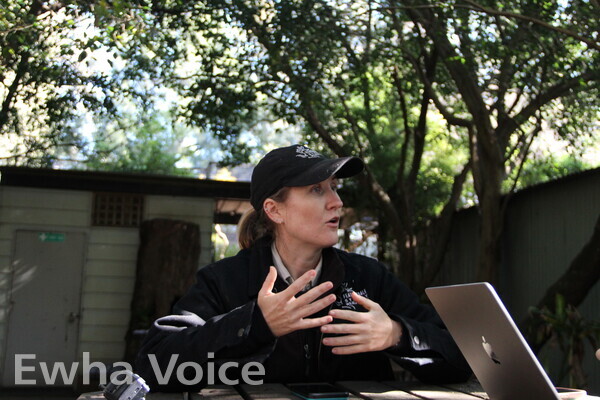
Featherdale Wildlife Park Sydney works for wildlife conservation through education
Featherdale Wildlife Park Sydney, one of Australia’s most famous zoos, is renowned for its large collection of Australian fauna. Featherdale provides a home to over 2,000 Australian native animals from more than 260 different species. The park holds the largest collection of koalas in New South Wales, provides encounters with iconic Australian animals, and owns a vast collection of birds both from Australia and around the world.
Kylie Zaia, Mammal Curator at Featherdale with six years of experience working as a mammal keeper, shared the park’s work towards its goals of wildlife conservation, which mainly involves educating the guests and helping them form connections with animals.
Zaia started off by proudly explaining the traits that make Featherdale special, including the large native animal collection and opportunities for the visitors to get up close to the animals. An example can be the four to five walkthrough areas in the park where guests can touch and feed animals, including kangaroos, koalas, and quokkas.
“Our goal is conservation, as well as education,” Zaia said. “The types of interaction that we provide connect the goals, as we definitely want guests tobe able to get up close to our animals to form connections, and through this process, learn that they should care about animals.”
In addition to the interactive experience that the park provides, Zaia mentioned various programs the park holds to participate in wildlife conservation. Featherdale offers volunteer programs for university students and work placement programs for high school students, which has led to a direct flow-on of young adults getting into zookeeping or conservation after this experience. Moreover, “Zookeeper for a Day” programs are open during school holidays for younger kids to have asimilar experience.
Zaia explained that the education programs are important in making people want to help and be involved with animals through emotional connections formed at the zoo, in contrast to the abstract experiences available through television and books.
Featherdale is not only making efforts within the zoo, but also actively reaches out for a more diverse audience. The park takes animals to schools and retirement homes for community outreach programs, sharing the same purpose of giving people opportunities for hands- on interaction to develop a love for animals, eventually leading to local wildlife conservation movements.
Despite it being a weekday, many school groups and families were at the park, scanning QR codes around the park to learn about the animals, listening to keeper presentations, and taking part in animal encounters.
One of the most impressive experiences was when Zaia introduced Olive, the youngest wombat at the park.
While explaining how Olive’s mother was killed by mange, a type of highly contagious mite-like parasite, Zaia also described how the encountersessions with Olive were effective for both the guests and the wombat. She is one of the animals who enjoys the attention of humans, and indeed the zoo would not hold these programs if they found that the animals did not feel comfortable interacting with people. Zaia described that Olive getting the attention she needs helps her relieve stress and socialize, and at the same time, providing the exclusive experience to emotionally interact with the animals for visitors. Throughout Zaia’s explanation, Olive would try to crawl over the zookeeper’s legs, revealing the strong bond between the two as Zaia had raised the wombat since its early youth.
Walking through the forest-like interior of the park, Zaia explained the various breeding or breed-to-release programs the zoo is part of, including those for the brush-tailed rock- wallabies, koalas, and Goodfellow’s tree kangaroo.
For some species, Zaia noted that the zoo only contributes by providing homes for animals that have “retired” from the breeding programs, which helps to free space in the breeding facilities. This demonstrates that although the zoo works to participate in various breeding programs for wildlife conservation, they never go beyond capacity, as they only breed the animals if they have suitable infrastructure and enclosures to do so.
“I just wanted to highlight how passionate all our zookeepers are,” Zaia said, ending the tour. “The number-one thing that we want to do is share the passion with everyone that comes through the door and help animals together.”
WILD LIFE Sydney Zoo leads Australian wildlife conservation at the center of Sydney
Located in the central business district of Sydney, WILD LIFE Sydney Zoo provides a diverse experience of over 10 exhibitions while working towards preserving the country’s wildlife. The uniquely themed event spaces not only provide guests with an unforgettable experience, but also contribute to the wildlife conservation movements.
Emily Partridge, a keeper at WILD LIFE for over three years, shared the various programs at the zoo for wildlife conservation and her experience working with different animals.
Partridge introduced that the zoo’s main goal is to connect guests with the native animals of Australia, especially to provide them with one- on-one experiences up close and in person, which the zoo believes will eventually contribute to wildlife conservation.
“I would say the most popular exhibits here are definitely the koalas and kangaroos,” Partridge said. “Most people think they will never get to see them their whole lives, and are very overwhelmed when they get to do so. I have seen people crying and cheering, and it feels amazing to be able to provide this experience to guests.”
WILD LIFE not only provides guests with the astounding experience, but also connects these experiences to wildlife conservation and animal welfare.
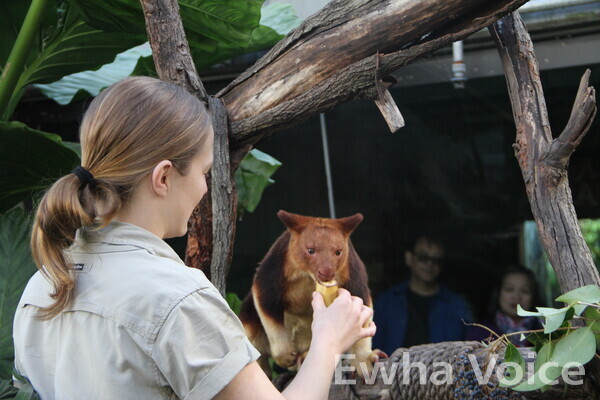
Being a Zoo and Aquarium Association in Australia (ZAA) accredited zoo, WILD LIFE goes through strenuous accreditation processes to make sure they meet the requirements. The process takes animal welfare to the next level, ensuring that animals are not just well looked after, but are also thriving and enriched.
The zoo’s main conservation program is its involvement with the Wildlife Conservation Fund. Raising money enables research and practical projects for endangered animals, including cassowaries, wombats, Tasmanian devils, and koalas.
As an example, WILD LIFE raises money for Rainforest Rescue, a project that helps cassowaries in the wild. The project purchases back plots of land in the Daintree Rainforest of Queensland, Australia, which is one of the main cassowary habitats, and replants trees to create more habitat and food for cassowaries. Partridge stated that she was able to see the real-life effects of the project when she volunteered to replant trees and saw the animals actually using the spaces that the organization had revitalized.
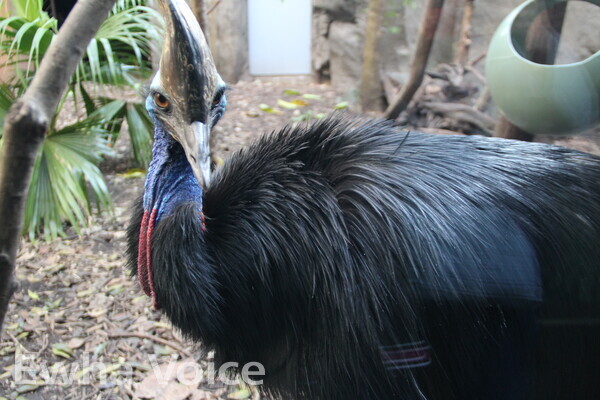
Partridge added how meaningful it was to be able to see the work in action and to donate money for the project through cassowary encounters, which Ewha Voice was also able to experience as part of a private tour.
Standing in front of the cassowary’s cage, Partridge explained how the keepers ran health checks and handled emergency situations without harming the animals. They trained them for these purposes along with the efforts for animal welfare the zoo pursues, which was demonstrated when the zookeepers did not force the cassowary to come up close even when it did not approach, respecting its casual behavior instead.
“One of the most amazing things about the zoo is that it does not feel small or packed, even when we are right in the middle of Sydney,” Partridge said. “We work to effectively allocate our limited space for the welfare of our animals. At the same time, guests can jump on the train, ferry, or catch an Uber to be here in a couple of minutes and see all the native animals that we have to offer.”
Visitors can also donate money through the Wildlife Conservation Fund and help animals such as the Tasmanian devil, one of the representative Australian animals. Moreover, a project called Sleepy Burrows works to rescue endangered wombats and help them return to the wild, accepting guest donations in the same way.
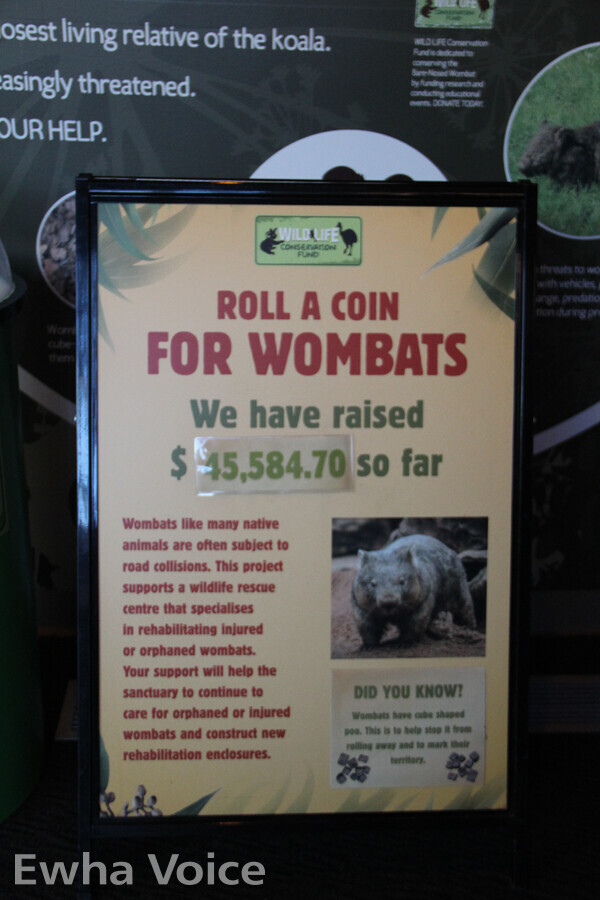
Since the fund is incorporated with a big zoo located in the middle of Sydney, it is easier for guests to hear about the organization and help get their message across. Partridge mentioned how the promotion helps bring greater contributions to wildlife conservation.
The zookeepers at WILD LIFE are working for animal welfare and helping them return to the wild rather than just creating a tourist attraction. In particular, although zoos are places where many people come and go, creating noise or distractions as a result, Partridge emphasized that most animals at WILD LIFE have been raised at the zoo since they were young, so they have been trained to take in the crowds as a familiar part of the environment.
“My favorite part of the job is to help visitors learn about animals that they never would have heard about,” Partridge said. “I would like to spread the message that even for the most dangerous animals, they do not have bad intentions behind them, and it is rather the humans going into their space and distracting them. I believe small movements and improvements are important for wildlife conservation and animal welfare, as any animal can go endangered any time.”
Animal Defenders Office makes legal changes for better environment for animals
Beyond the various efforts for animal protection, as well as the establishment and operation of animal rescue organizations at zoos, the Animal Defenders Office (ADO) provides legal assistance for animals as a non-profit community legal center specializing in animal laws and animal protection matters.
According to Tara Ward, the cofounder and managing solicitor of the organization, ADO was established 10 years ago by volunteers and is still run byvolunteering lawyers who offer help to anyone having legal problems that involve animals. They provide a full range of services such as legal advice and representation in courts, tribunals, and mediation. In addition, for the protection of animals on a legal level, ADO engages in law reform activities and carries out legal education for local communities.
Ward explained that the logo of ADO takes the form of a kangaroo, a cat, and a chicken drawn around a scale symbolizing law. This logo expresses the representative types of animals that ADO wants to protect: the kangaroo represents Australian wildlife, the cat represents household pets, and the chicken represents farmed animals. She explained that the goal of ADO is to protect all types of animals expressed in the logo as well as animals raised for entertainment and experiments.
Animal welfare laws for the purpose of preventing animal abuse and cruelty have been enacted in Australia. However, animal welfare is regulated differently by the governments of each state and territory, not by the Australian federal government. Moreover, there is a type of law that regulates the requirements for raising pets such as dogs and cats, and conservation laws that protect nature and wildlife in their natural state.
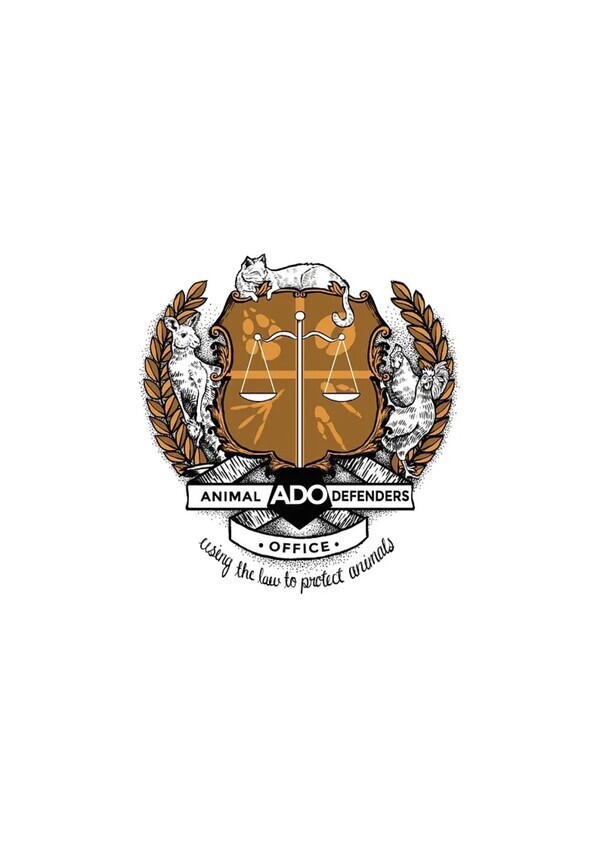
One of the most memorable cases ADO was involved with was a trial against the government’s decision to kill thousands of kangaroos in the Australian Capital Territory.
At the time, the government determined that the number of kangaroos was too large within the city and announced plans to distribute licenses to shoot them. The trial against the government took place for three days, and the tribunal agreed that killing adult kangaroos would lead to the unintended consequences of baby kangaroos dying of starvation. Unfortunately, the tribunal nevertheless judged that the government should be allowed to hire people to shoot the kangaroos.
Although the kangaroo-related trial ultimately failed to achieve its goal, she expressed that ADO’s efforts to protect animals have been recognized by the court and influenced animal life protection awareness in Australia.
Moreover, these precedents have made ADO more committed to law reform. Ward stated that since the current laws in Australia are not sufficient to protect animals, efforts in law reform is what ADO is mainly focusing on.
Ward also explained that there was an inquiry to stop the importing of products taken from wild animals such as elephant ivory or rhinoceros horns. In response, ADO wrote detailed submissions and made several recommendations to resolve this problem. The organization also lobbied the Australian Capital Territory where the office is based to amend their local animal welfare laws and recognize animals as sentient creatures. As a result, ADO succeeded in making the Australian Capital Territory the first jurisdiction in Australia to recognize that animals feel pain and suffer when treated cruelly.
“The Animal Defenders Office thinks that the best law reform that could happen is to recognize animals as legal persons,” Ward said. “For now, animals cannot hold rights because it is only legal persons who can do so. But as animals are sentient, many lawyers believe that nothing will improve until animals can hold basic rights such as the right to life and right to be free from torture.”

